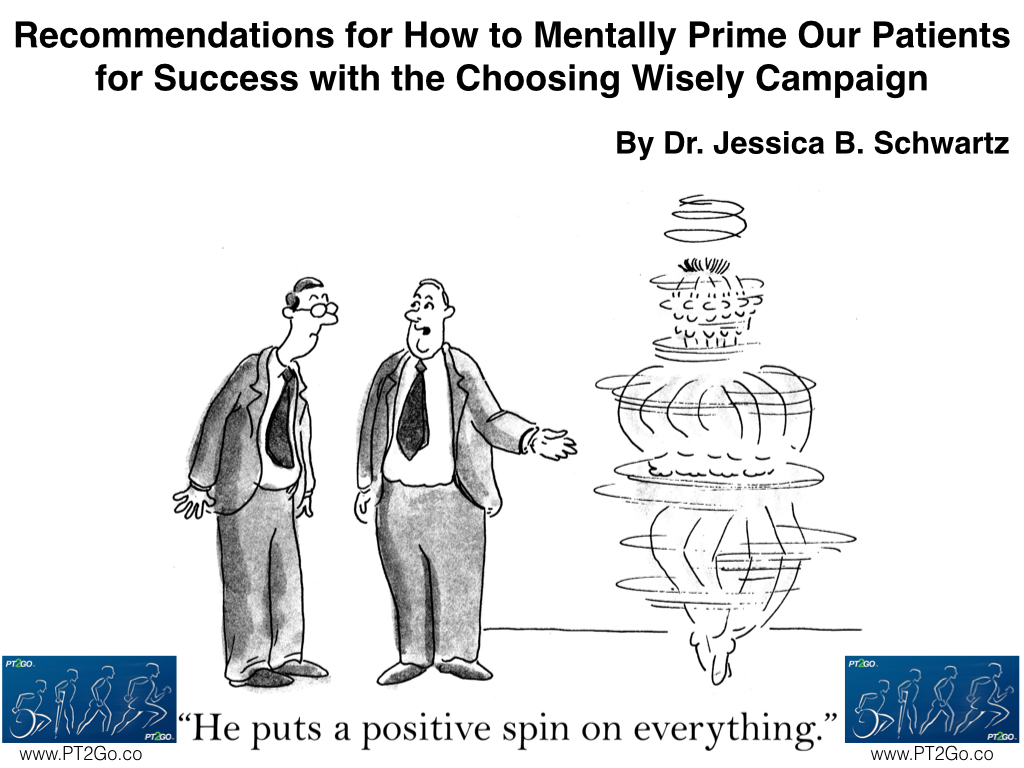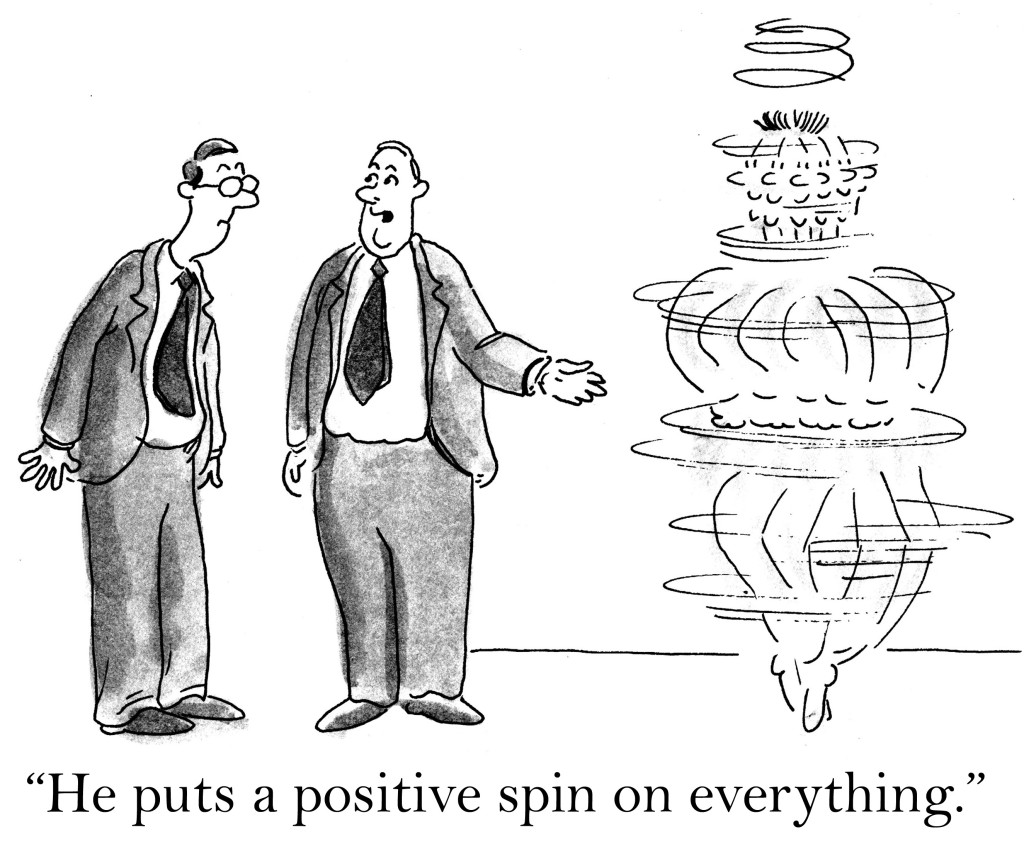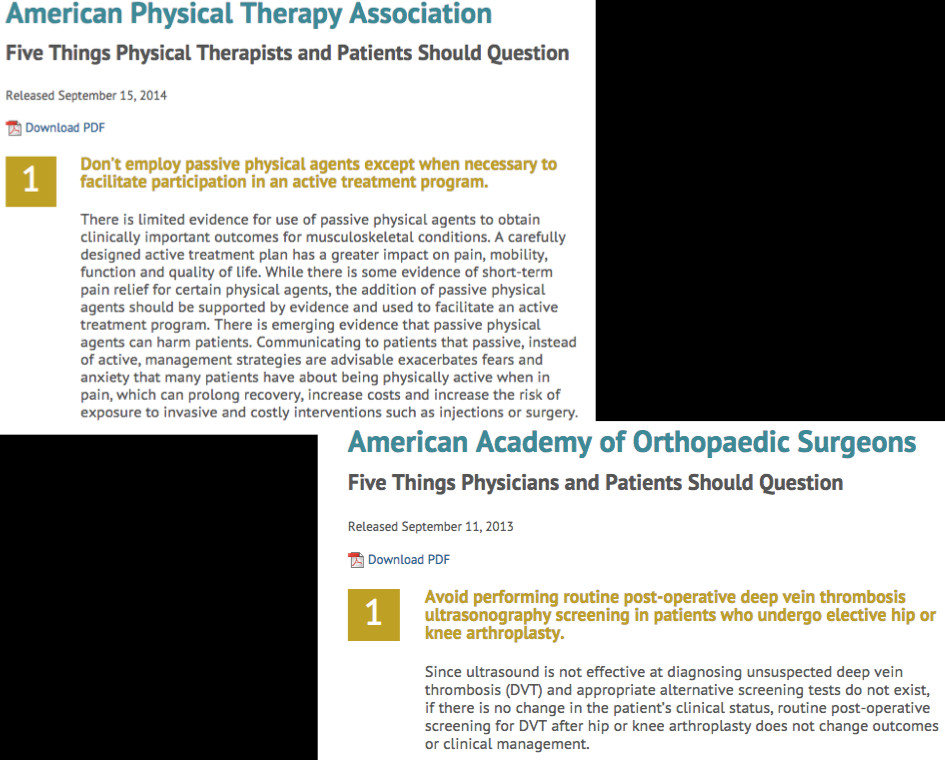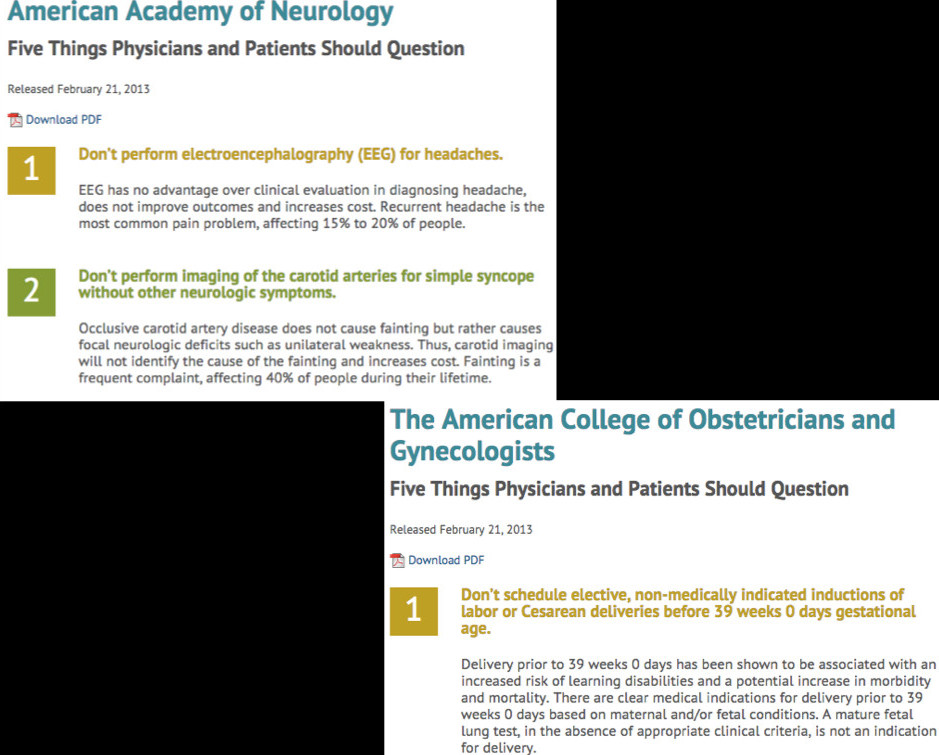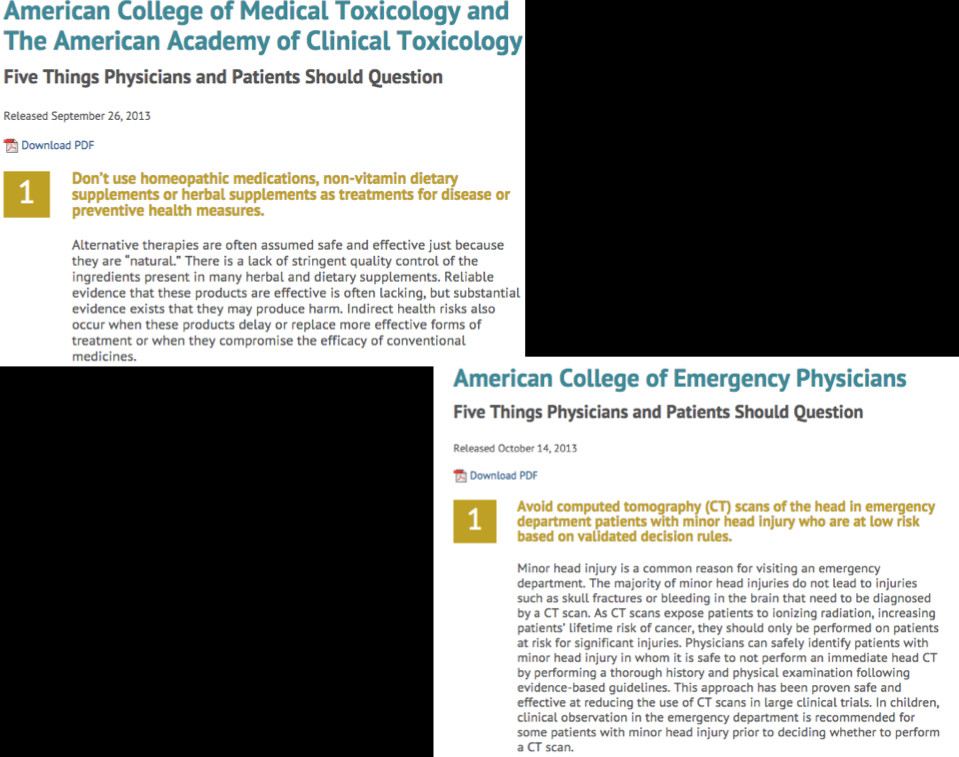Simplicity and Elegance of Positive Language Communication: Recommendations for How to Mentally Prime Our Patients for Success with the Choosing Wisely Campaign
Dr. Jessica B. Schwartz PT, DPT, CSCS
The impetus behind this article is to address the language behind the Choosing Wisely campaign. I hope by providing feedback and subtle paradigm shifts in language, I can aide in increasing communication success between both doctor and patient.
Join me as I take you through the Choosing Wisely campaign background, my reflections on the American Physical Therapy Association’s (APTA) campaign, and action steps on how we can achieve optimal communication between clinicians and patients.
Choosing Wisely
The Choosing Wisely campaign is a patient centered educational campaign based in the United States that seeks to improve doctor-patient communication and relationships about overutilization of medically prescribed resources[1].
I came across the APTA’s Choosing Wisely Campaign and the Consumer Reports article reviewing the campaign as I was sifting through my Twitter feed one morning. Not only was I excited to find out that we were the first non-physician organization to take part in this campaign[2], I felt proud that my organization was leading the way in advocating for patients to take control of their health and well-being.
The APTA campaign, entitled “Five Things Physical Therapists and Patients Should Question”, was my first exposure to the Choosing Wisely campaign. As I continued to read through other Choosing Wisely sections in Nursing, Orthopedic Surgery, Emergency Medicine and Neurology, I realized this whole campaign was speaking to patients using a structure based solely on negative language. Each sentence began with the words “don’t” or “avoid”.
As soon as I read these articles, I knew there was a better approach when it comes to speaking with our patients.
As I transitioned over to the Consumer Reports review of the APTA Choosing Wisely campaign, I was somewhat biased reading an article about my own profession written by a freelance writer who authored “Still Hot Your Uncensored Guide to Divorce, Dating, Sex, Spite and Happily Ever After”.
I would be remiss if I didn’t say I felt frustrated with the Consumer Reports article educating the masses using phrases like “wimpy exercise programs” to describe a doctoral level education plan of care with regards to exercise prescription for the elderly.
My discontentment with the Choosing Wisely campaign is not with the information being delivered, but how it is being delivered to the consumer.
I’d like to take a moment to address how I believe the Choosing Wisely campaign could be shifted to improve communication between the medical community and our patients.
Reflections:
It was during my undergraduate career when I took a sports psychology class in the hills of Ithaca, NY, I realized the importance of positive psychology and its role in achieving peak performance for all individuals.
Clinically, I have had the opportunity to work with patients who have felt absolutely helpless and hopeless about their present health situation to elite athletes who would like to conquer a new athletic endeavor.
As a novice or a master clinician I ask you, what do these completely different patients’ treatment paradigms have in common?
One central tenet: I treat them exactly the same. I cater to their individual needs, goals and desires while addressing their fears and uncertainties with confidence, realistic, and positive outcomes and goals.
Richard Boyatzis, a psychologist from Weatherhead School of Management at Case Western Reserve University, advocates that when we focus on strengths, there is a tendency to move toward a desired future which internally stimulates openness to new ideas, people, and plans. Talking about positive goals activates brain centers that opens you up to new possibilities. Reciprocally, focusing on the alternative, or negatives, evokes a defensive mechanism and leads us to close down[3].
A positive language and motivational model is often used when speaking with professional athletes and elite executives in corporate America. Rick Aberman, peak performance director for the Minnesota Twins, states that “when the coach reviews plays from a game and only focuses on what not to do next time, it’s a recipe for players to choke.”[4]
During my days coaching basketball, I remember watching every inspirational sports movie I could get my hands on from Hoosiers to The Mighty Ducks, speaking to other coaches about their best practices, referring back to coaching lectures, and reading coaching books by Pat Summit from the University of Tennessee for guidance.
I remember coaching a close game one winter in upstate New York. The score was tied and I called a time out. Tapping into all of my coaching research, I looked each and everyone of my players in the eye and initiated my plan of action to my point guard, “Alicia, you’re going to pass the ball to Katy and she’s going to roll off of the screen that Meg is going to set. She’s going to bank the shot in and all of you are going to full court press until the clock runs out to win the game so we can go home and celebrate”.
Why aren’t we speaking to our patients like this?
We can mentally prime our patients for success with the simplicity and elegance of positive language communication.
Master clinicians discuss this in academic medicine all the time: language and delivery matter.
Recommendations:
I challenge you to think about how you speak with your patients and colleagues on an interdisciplinary level. Every interaction doesn’t need to be a critical life changing beat the buzzer intense moment; however, words and language matter.
Moving forward as a cohort of passionate, capable and autonomous Doctors of Physical Therapy in the United States, it is imperative that we adopt this positive language delivery system ranging from our everyday practice in patient care to an elevator pitch when fellow doctors and clinicians ask us how Physical Therapy can benefit their patients.
This is my challenge to the healthcare community: Choose Your Language Wisely.
My name is Dr. Jessica Schwartz. I am a residency trained Doctor of Physical Therapy in Orthopedics and here is how I can help you Choose Wisely.
1. Do use passive physical agents as an adjunct to skilled manual therapy and supervised therapeutic exercise in order to aide in inflammatory pain management. If time is an issue or compliance is not an issue, do educate patients that they can ice, heat or use a TENs unit at home.
-Our job is to make people feel better. The number one reason patients come to Physical Therapy is because they are in pain. The 21st century patient is busy and often stressed. In order for me to provide skilled one on one orthopedic manual Physical Therapy, I need my patient to be calm, mentally primed to disassociate themselves from life’s stressors i.e. to be as relaxed as possible so they are present and active in their treatment session, and for the area to be ready to receive treatment. Moist heat, cold and/or electric stimulation are all non invasive and safe alternatives to an anti-inflammatory or other oral medications. Patients are consumers and should be educated that it is not ok to receive passive physical agents as a sole form of treatment.
2. Do make your Physical Therapist fully aware of your activities of daily living, familial responsibilities, work requirements, athletic abilities and desires. All of the above are independent of your chronological age. Chronological and biological age of our patients vary greatly. It is our job to dose the exercise prescription intensity, duration, and frequency not to your chronological age, but to your biological age and abilities. We work with 80 year old triathletes and 20 year olds living in hospice facilities. Our job is to individually tailor realistic, functional, safe, and achievable short term and long term goals for our patients.
-Physical Therapists are educated so that we fully comprehend the physiological demands of the musculoskeletal, neurological, cardiovascular, pulmonary, and integumentary systems, how these systems interact with each other in order to differentially diagnose different pathologies appropriately for referral as needed, and how to get all of these systems working as efficiently as possible with a patient spectrum ranging from the frail elderly to the elite athlete. In other words, our job is to make the patient function to the best of their ability in a pain-free and energy efficient way.
3. Do move with the skilled supervision of a Physical Therapist after an acute deep vein thrombosis (DVT) and initiation of anticoagulant therapy, unless significant medical concerns are present.
-Patients lose 0.5–0.6% of total muscle mass per day on bed rest. Bed rest was the appropriate prescription for low back pain and DVT 20 years ago. Evidenced based practice has led us to present day conclusions that bed rest causes more harm than good (muscle atrophy, strength decrease, onset of insulin resistance, decline in basal metabolic rate, and other negative pathophysiological breakdowns). [5-6]
4. Do use continuous passive motion (CPM) machines in the complicated total knee replacement. Active prescribed therapeutic exercise for range of motion (ROM) and weight bearing (WB) status should be achieved multiple times per day after total joint replacement. If the patient is not compliant or not able to achieve post-operative requirements of prescribed movement, the CPM is a good adjunct with skilled physical therapy.
5. Do use directed wound irrigation or a pulsed lavage with suction for wound management. Be wary of whirlpools due to bacterial cross contamination concerns.
Choosing Wisely is an excellent campaign to involve multidisciplinary levels of communication to patients, consumers, and other healthcare professionals; however, I believe a subtle shift in the delivery can make all the difference in how patients perceive and receive the information geared towards them.
Physical Therapy as a profession is in a transitional time doing our very best to educate the masses about all the various therapies we can provide independently and complementarily to aide in optimal functioning across the lifespan.
It is important to be comfortable with your doctor. If your Doctor of Physical Therapy is comfortable with his/her clinical abilities, he/she should welcome patient questions or concerns after a thorough review of their plan of care. Remind patients that it is okay to ask questions. If rapport is not established, more often than not patients are intimidated by asking questions due to fear, intimidation, risking feeling silly, etc.
I encourage questioning during the course of a plan of care because this way I know the patient is comprehending the value of their treatment session, are engaged, and are invested in advocating for themselves.
A master clinician is able to field all of the intangibles that the day to day environment brings in healthcare. Some clinics are busier than others. If a patient does not feel comfortable with their provider, remember to educate them that they have a choice to seek out a new provider to achieve their functional desires and goals.
Finally, when a patient finds their ideal Physical Therapist remind them to stick with them! Having a healthcare professional who is easily accessible and who is knowledgeable in treating all of their musculoskeletal concerns throughout the lifespan is a wonderful relationship to cultivate in order to achieve optimal health and well-being.
We all have different strengths, specialties, and abilities, so make sure patients are educated to seek out a Physical Therapist that melds well with their personality, goals, and geographical location.
Good luck in finding the Physical Therapist right for you and here’s to Choosing Wisely!
Bibliography
1.Cassel, C.K. and J.A. Guest, Choosing wisely: helping physicians and patients make smart decisions about their care. JAMA, 2012. 307(17): p. 1801-2.
2.APTA releases its Choosing Wisely list of what to question. 2014 [cited 2014 October 28, 2014]; Tuesday September 16, 2014:[Available from: http://news.todayinpt.com/article/20140916/TODAYINPT04/140915009/0/TODAYINPT0%20105.
3.Goleman, D. (2013b). Focus (Kindle ed., pp. 320): Harper Collins.
4.Goleman, D. (2013b). Focus (Kindle ed., pp. 30): Harper Collins.
5. Brocca, L., et al., The time course of the adaptations of human muscle proteome to bed rest and the underlying mechanisms. J Physiol, 2012. 590(Pt 20): p. 5211-30.
6. Wall, B. T., Dirks, M. L., & van Loon, L. J. (2013). Skeletal muscle atrophy during short-term disuse: implications for age-related sarcopenia. Ageing Res Rev, 12(4), 898-906. doi: 10.1016/j.arr.2013.07.003

